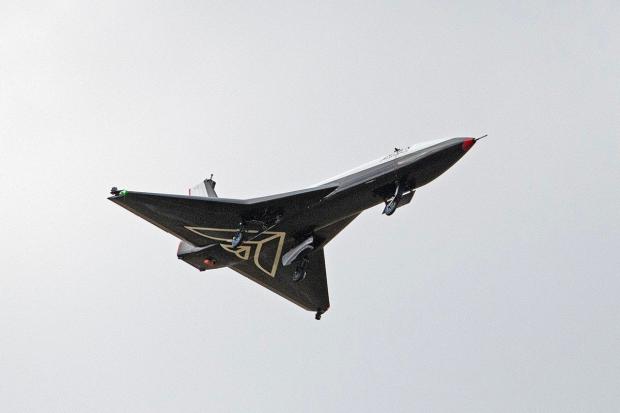
Breaking News
 James O'Keefe: My entire speech at AmericaFest 2025. We're not stopping. Join us to expose..
James O'Keefe: My entire speech at AmericaFest 2025. We're not stopping. Join us to expose..
 U.S. vs. Chinese Military Comparison – Focus on Asia-Taiwan Scenario
U.S. vs. Chinese Military Comparison – Focus on Asia-Taiwan Scenario
 DoJ Sues Four More States for Failing To Produce Voter-roll Data
DoJ Sues Four More States for Failing To Produce Voter-roll Data
 World's Largest Aviation Giant Abandons Google Over Security Concerns
World's Largest Aviation Giant Abandons Google Over Security Concerns
Top Tech News
 Perfect Aircrete, Kitchen Ingredients.
Perfect Aircrete, Kitchen Ingredients.
 Futuristic pixel-raising display lets you feel what's onscreen
Futuristic pixel-raising display lets you feel what's onscreen
 Cutting-Edge Facility Generates Pure Water and Hydrogen Fuel from Seawater for Mere Pennies
Cutting-Edge Facility Generates Pure Water and Hydrogen Fuel from Seawater for Mere Pennies
 This tiny dev board is packed with features for ambitious makers
This tiny dev board is packed with features for ambitious makers
 Scientists Discover Gel to Regrow Tooth Enamel
Scientists Discover Gel to Regrow Tooth Enamel
 Vitamin C and Dandelion Root Killing Cancer Cells -- as Former CDC Director Calls for COVID-19...
Vitamin C and Dandelion Root Killing Cancer Cells -- as Former CDC Director Calls for COVID-19...
 Galactic Brain: US firm plans space-based data centers, power grid to challenge China
Galactic Brain: US firm plans space-based data centers, power grid to challenge China
 A microbial cleanup for glyphosate just earned a patent. Here's why that matters
A microbial cleanup for glyphosate just earned a patent. Here's why that matters
 Japan Breaks Internet Speed Record with 5 Million Times Faster Data Transfer
Japan Breaks Internet Speed Record with 5 Million Times Faster Data Transfer
Rocket plane makes first civil supersonic flight since Concorde

Ever since the Anglo-French Concorde retired in 2003, civil supersonic flight has been something of a lost art. In recent years, a number of startups have been working on various projects to create a new generation of supersonic transports that are quieter, greener, more efficient, and cost effective to operate.
Now, one supersonic aircraft has actually taken flight, albeit in the form of an uncrewed, remotely piloted experimental craft with a wingspan of 13 ft (4 m) and a dry weight of 880 lb (200 kg). In the skies over New Zealand's Glentanner Aerodrome near the base of Aoraki/Mount Cook, the Mk-II Aurora hit Mach 1.1 while climbing to an altitude of 82,500 ft (25,150 m).
According to the company, the Mk-II Aurora broke other records by being the first New Zealand-designed and built supersonic aircraft, the highest altitude reached from New Zealand, and the fastest climb to 66,000 ft (20 km). The rocket-powered aircraft did this in 118.6 seconds, which is 4.2 seconds better than that achieved by a specially modified F-15 in the 1970s.
In addition, the Mk-II Aurora made a second flight six hours later.
The eventual goal is to reach speeds of about Mach 3.5 at the edge of space, which is an altitude of 62 miles (100 km), where the Aurora would be used for microgravity research, atmospheric science, Earth observation, and testing high-speed flight.
"This achievement highlights the immense potential of rocket-powered aircraft to achieve performance never seen before," said Stefan Powell, CEO of Dawn Aerospace. "With flight test 57, we retired the final major technical risk in the Aurora program: vehicle dynamics through the transonic regime. We have now confirmed the Aurora as the highest climb rate vehicle ever built. This milestone sets the stage for Aurora to become the world's highest and fastest-flying aircraft and paves the way for the first operational hypersonic aircraft, redefining what's possible in aviation."

 Advanced Propulsion Resources Part 1 of 2
Advanced Propulsion Resources Part 1 of 2

